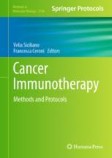Search
Search Results
-
Maintenance of methylation profile in imprinting control regions in human induced pluripotent stem cells
BackgroundParental imprinting is an epigenetic mechanism that leads to monoallelic expression of a subset of genes depending on their parental...

-
Induction of Exaggerated Cytokine Production in Human Peripheral Blood Mononuclear Cells by a Recombinant SARS-CoV-2 Spike Glycoprotein S1 and Its Inhibition by Dexamethasone
An understanding of the pathological inflammatory mechanisms involved in SARS-CoV-2 virus infection is necessary in order to discover new molecular...

-
The role of Nurr1-miR-30e-5p-NLRP3 axis in inflammation-mediated neurodegeneration: insights from mouse models and patients’ studies in Parkinson’s disease
Nuclear receptor related-1 (Nurr1), a ligand-activated transcription factor, is considered a potential susceptibility gene for Parkinson’s disease...

-
SARS-CoV-2 infection as a model to study the effect of cinnamaldehyde as adjuvant therapy for viral pneumonia
BackgroundThe recent pandemic outbursts, due to SARS-CoV-2, have highlighted once more the central role of the inflammatory process in the...

-
The Expression of MAFB Gene in Circulating Monocytes Is Related to Chronic Inflammatory Status in T2DM Patients
Immune cell–mediated chronic inflammation is one of the causes of type 2 diabetes mellitus (T2DM). Therefore, identifying inflammatory markers in...

-
Progranulin haploinsufficiency mediates cytoplasmic TDP-43 aggregation with lysosomal abnormalities in human microglia
BackgroundProgranulin (PGRN) haploinsufficiency due to progranulin gene ( GRN ) variants can cause frontotemporal dementia (FTD) with aberrant TAR...

-
Biodistribution and immunity of adenovirus 5/35 and modified vaccinia Ankara vector vaccines against human immunodeficiency virus 1 clade C
Previously, we developed a chimeric adenovirus type 5 with type 35 fiber (Ad5/35), which has high tropism to dendritic cells and low hepatoxicity....

-
Attenuated Dengue virus PV001-DV induces oncolytic tumor cell death and potent immune responses
BackgroundViral therapies developed for cancer treatment have classically prioritized direct oncolytic effects over their immune activating...

-
Towards a better preclinical cancer model – human immune aging in humanized mice
BackgroundPreclinical models are often used for cancer studies and evaluation of novel therapeutics. The relevance of these models has vastly...

-
Immunosuppression by hydroxychloroquine: mechanistic proof in in vitro experiments but limited systemic activity in a randomized placebo-controlled clinical pharmacology study
Based on its wide range of immunosuppressive properties, hydroxychloroquine (HCQ) is used for the treatment of several autoimmune diseases. Limited...

-
The use of a systems approach to increase NAD+ in human participants
Reversal or mitigation against an age-related decline in NAD + has likely benefits, and this premise has driven academic and commercial endeavour to...

-
Production of an interleukin-10 blocking antibody by genetically engineered macrophages increases cancer cell death in human gastrointestinal tumor slice cultures
Although it can promote effector T-cell function, the summative effect of interleukin-10 (IL-10) in the tumor microenvironment (TME) appears to be...

-
Zika virus infection suppresses CYP24A1 and CAMP expression in human monocytes
Monocytes are the primary targets of Zika virus (ZIKV) and are associated with ZIKV pathogenesis. Currently, there is no effective treatment for ZIKV...

-
Reprogramming of Normal Cells into Human Pluripotent Stem Cells
Human pluripotent stem cells (hPSCs) have the potential to become the source of materials for cell-based therapy. The similarity of hPSCs with the...
-
Rab37 mediates trafficking and membrane presentation of PD-1 to sustain T cell exhaustion in lung cancer
BackgroundProgrammed cell death protein 1 (PD-1) is an immune checkpoint receptor expressed on the surface of T cells. High expression of PD-1 leads...

-
A non-genetic engineering platform for rapidly generating and expanding cancer-specific armed T cells
BackgroundCancer-specific adoptive T cell therapy has achieved successful milestones in multiple clinical treatments. However, the commercial...

-
Biallelic human SHARPIN loss of function induces autoinflammation and immunodeficiency
The linear ubiquitin assembly complex (LUBAC) consists of HOIP, HOIL-1 and SHARPIN and is essential for proper immune responses. Individuals with...

-
In Vitro Cytokine Production by Dengue-Infected Human Monocyte-Derived Dendritic Cells
Despite many advances on the understanding of dengue pathogenesis in the last decades, some questions remained to be clarified. The virulence of the...
-
How to Test Human CAR T Cells in Solid Tumors, the Next Frontier of CAR T Cell Therapy
Chimeric antigen receptor (CAR) T cell therapy has proven to be a successful treatment option for leukemias and lymphomas. These encouraging outcomes...
-
4-Octyl Itaconate Inhibits Proinflammatory Cytokine Production in Behcet’s Uveitis and Experimental Autoimmune Uveitis
4-octyl itaconate (4-OI) is an anti-inflammatory metabolite that activates the nuclear-factor-E2-related factor 2 (NRF2) signaling. In the current...

